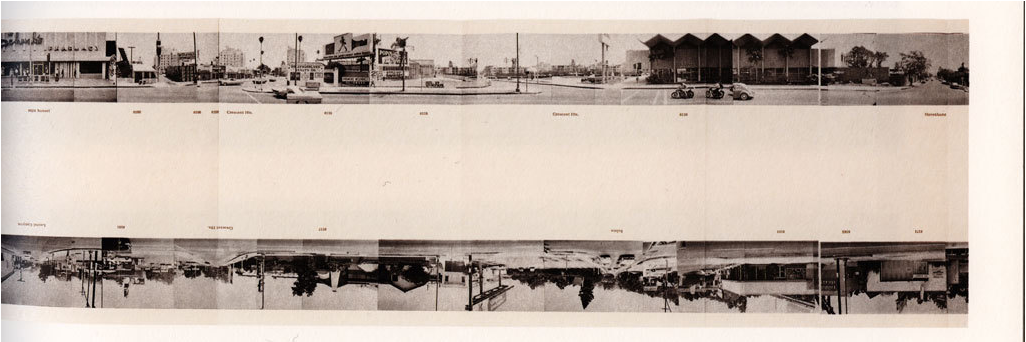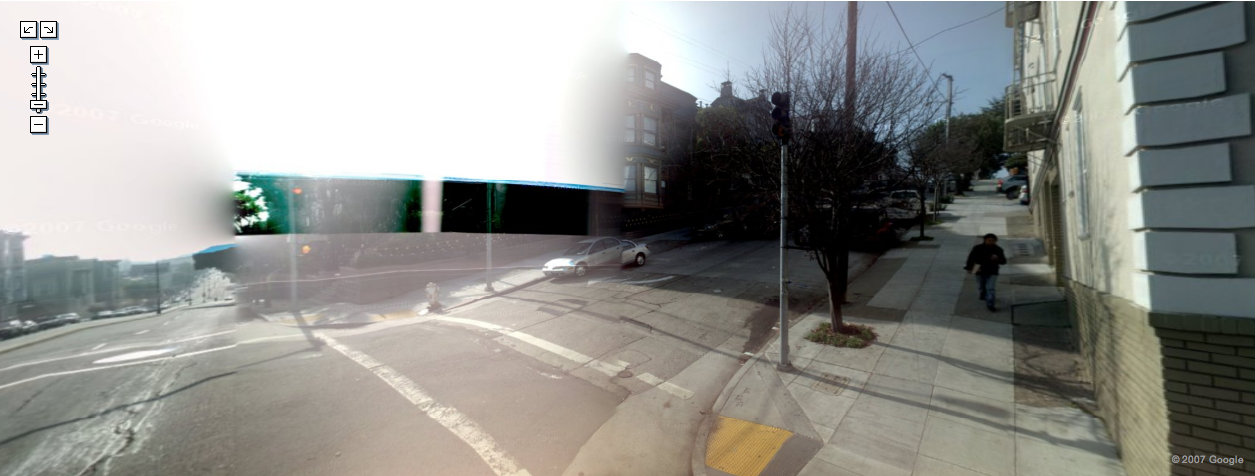Joyce Goggin – Feminist!
Dr. Goggin was a bit annoyed by a cartoon made by Peter van Straaten on a conference for students. Campus.tv made a little report!
 Mauri is “hello!” in I-Kiribati. Why are you telling me this? You probably ask yourself. Well, let me explain…
Mauri is “hello!” in I-Kiribati. Why are you telling me this? You probably ask yourself. Well, let me explain…
I was just checking out our statistics and the first three countries on the “visitors per country list”were no surprise: The Netherlands is first, then the U.S.A. and then the Indeterminable countries, whoever they are ;-). The big surprise was number four. Beating out France, the UK and China is a small group of islands with the name of Kiribati. Although most of the population does understand English I did think it was a good idea to give all those MoM fans a nice welcome in their own language.
The information I give you now will put things into a different perspective, nonetheless, I learned a new word and found a new tropical island to put on my “43 places to visit before I die” list. Mauri! (more…)
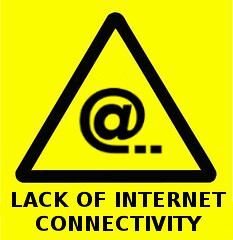 an inventory of future warning signs is funny: should the masters make stickers and distribute accordingly? Of course, the warning signs we have now are not so bad, either.
an inventory of future warning signs is funny: should the masters make stickers and distribute accordingly? Of course, the warning signs we have now are not so bad, either.
via Schneier
 Locative media is about as vague a term as web 2.0. Essentially, locative seems to be about connecting ‘third nature’ information to real world places and/or objects. But there are a number of ways this can happen.
Locative media is about as vague a term as web 2.0. Essentially, locative seems to be about connecting ‘third nature’ information to real world places and/or objects. But there are a number of ways this can happen.
Below I suggest some basic categories of locative projects, based on techniques (e.g. localizing web content, embedding data in specific places) rather than uses (educational, artistic, community-building, etc.). Making an taxonomy like this is bound to fail, but I think helps put perspective on our work of analyzing developments in that all too hip phenomenon of locative media. Please comment and suggest changes…
Together with the HvA Medialab and Waag Society, Mediastudies is developing a Mobile Learning Game Kit, an educational tool that works with mobile and wireless devices. The Game Kit, developed with funding from SURF, was presented at the SURF Onderwijsdagen 2006 through this little – and admittedly slightly boring – video. (The page requires Internet Explorer 5.5 or higher: apparently Firefox, Mozilla, and Safari haven’t made their way to Wageningen University where the film was produced)
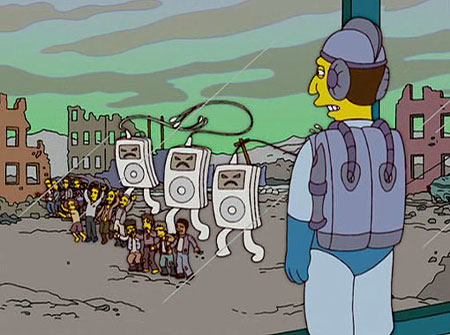
“If only we’d known that iPods would unite and overthrow the very humans they entertained…” From The Plastic Bag

The newest hype nowadays seems to be Twitter which allows you to share what you are doing with your friends every single second. Are you going to the mall? Is your cat sneezing? Update your Twitter page on the web, or by instant messaging, or send a text message from your phone. Your friends will receive this message on the web/IM or on their phone. This phenomenon has recently been named microblogging because your messages have to be short, 140 characters or less. This is of course caused by the restriction on text messaging which is around 140 characters. I am quite curious how this service became such a hype and so popular in such a short time. Hyves, the Dutch social networking site, already had a quite similar function with Wie, Wat, Waar? (Who, What, When?) which also allows you to share what you are doing and where on your site.
So I’m at my mum’s trying to make some progress on writing my thesis, and she complained about one of the sites she likes to visit – UrukNet – being shunned from Google News.
I asked her for some links regarding this, and apparently there are a number of curious issues surrounding Google and controversal (leftish) websites.
I’m not sure what to think, but I am certainly not surprised…
Thursday was the day of the Google Geo Day 2007 in Amsterdam. I made a report on it and put it on my personal blog because the layout of the Masters of Media site didn’t want to cooperate! This might be something for you Anne, incompatibility issues within WordPress! Anyway, you can check out the report here: Google Geoday Benelux 2007 Report.

 As I was playing Zelda: A Link to the Past today on my SNES emulator, something struck me: I had an in-game deja-vu. A feeling as if I had been there before. My mind quickly tried to scan all the options and I found out that I have really vivid memories of various computer games. These experiences are basically stories I could tell to my friends and family at a party. As cognitive psychologist Jerome Bruner mentioned in his interesting essay Life as Narrative: all our experiences are in some way structured as narratives, and we remember and learn from these narratives in the future.
As I was playing Zelda: A Link to the Past today on my SNES emulator, something struck me: I had an in-game deja-vu. A feeling as if I had been there before. My mind quickly tried to scan all the options and I found out that I have really vivid memories of various computer games. These experiences are basically stories I could tell to my friends and family at a party. As cognitive psychologist Jerome Bruner mentioned in his interesting essay Life as Narrative: all our experiences are in some way structured as narratives, and we remember and learn from these narratives in the future.
In 1965, Ed Ruscha photographed Every Building on the Sunset Strip, in a way that may sound familiar to those following the Google Streetview release:
Ed Ruscha took the photographs contained in this leporello with a motorized Nikon camera mounted to the back of a pick-up truck. This allowed him to photograph every house on the Sunset Strip while driving – first down one side of the street and then the other. The pictures were then pasted in order, and the individual buildings were labeled with their respective house numbers.
There is so much to say about Streetview, luckily most of it does not involve any of the weird captures that have been all the rage lately (rivaling Loltheorists? no, but still pretty big). Then again, what seems so fascinating about Streetview is exactly its ‘Hey, look at this!’ value – even for relatively boring photographs – the same thing that keeps us uploading digital photos by the bucket to sharing sites like Flickr.
As you might have heard Radiohead dropped its major label and put its new album online for download. This is not a new strategy but what is interesting is that they don’t sell their music through iTunes for $0.99 per song or $10-12 per album but through their site only. They are moving the legal download music industry into a new direction. The album doesn’t have a fixed price but you pay what you wish.

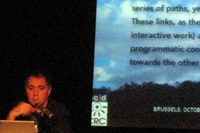 The subtitle of this conference is Responses to YouTube, and at least one alternative to the world’s largest supplier of piano-playing-cat videos comes in the form of ‘soft video’, via Australian media scholar Adrian Miles.
The subtitle of this conference is Responses to YouTube, and at least one alternative to the world’s largest supplier of piano-playing-cat videos comes in the form of ‘soft video’, via Australian media scholar Adrian Miles.
Some of the questions he asks: Where does an online video end – at what point is it ‘complete’? Are those limits imposed by technology or are they lingering clichés of narrative form (as opposed to Manovich’s ‘database’)? Can online video be imagined differently, outside the frames of cinema and TV?
Television Killed the Video Star
The problem with web video now is that it is not television but acts as if it is. YouTube aligns itself with some aspects of TV: it doesn’t allow users to manipulate content, and owns content generated by users. Its affinity with TV is made most obvious by the fact that the site centers around popular TV content (making its biggest problem copyright laws).
On the other hand, Miles says, YouTube helps de-naturalize some industry assumptions about ‘quality’ TV – what good is high resolution version of the Colbert Report if everyone is watching it online anyway? It also promotes dynamic pathways through content, and merely by being popular it contributes to the development of Web video standards (not necessarily a bad thing).
Actualizing the Virtual with Soft Video
Adopting the language of Gilles Deleuze, Miles makes the case for rethinking video. He says that if YouTube is to survive, it will have to make its content granular: tagging scenes and shots, linking between them, making it easy to remix content at the level of the smallest possible unit.
By opening up video – through both industry decisions and by building better remix software – a space opens up for what Miles calls soft video. This would be a move away from what he calls teleological editing – that bane of narrative form that says you need a third act, a fitting conclusion. Rather, following the database form of the Web, online video could become something new (there is no ‘last page’ on the Internet, Miles jokes). The aesthetics of soft video would be less those of cinema or televison, and more those of music: rhythm and repetition, feel and tone. Soft video would not be shaped by a need for closure, and every movement ‘forward’ would open up new trajectories rather than shut them down. Soft video would actualize the virtual.
After some weeks the spinplant is still alive. A search with the query “spinplant” in Google gives an overview of some nice and weird links. For example a mention on a Japanese site, linked to Secondlife. But the spinplant also appeared on the website ‘watvindenwijover’, a Dutch site where people can give their opinion about different things that happen online.
Michael’s article about making the spinplant more relevant is still favorite. Surprisingly Wikipedia is first to be found on the 34th result.
 The Mobile City conference
The Mobile City conference
27 & 28 February 2008
NAi (Netherlands Architecture Institute) Rotterdam, The Netherlands
Announcement & Call for Participation
www.themobilecity.nl
“The Mobile City” is a two-day conference about locative & mobile technologies, urban culture and identity. The Mobile City brings academics, architects, urban professionals and media designers together to address the question: what happens to urban culture when physical and digital spaces merge? Keynote speakers are Stephen Graham, Tim Cresswell, Malcolm McCullough and Christian Nold.
Background
The physical, geographical city with its piazza’s, its neighbourhoods and crossings intersects with the ‘virtual space’ of electronic communication-, information- and observation-networks of GSM, GPS, CCTV, UMTS, WIFI, RFID, etc. At the same time, the domain of digital space is increasingly becoming physical, an “internet of things” is emerging. Another example is the rise of ‘pervasive games’, digital games with a physical component in urban space. Is it still useful or even possible to talk about the city as being only physical? Or about the digital world as purely ‘virtual’ (in the sense of ‘not real’ or immaterial)? The physical city and the spaces of digital technologies merge into a new “hybrid space”. Hybrid spaces are shaped by the social processes that concurrently take place in digital and physical spaces. What is the influence of these developments on the ideas we have of time, space and place, citizenship and identity?
Conference questions
Locative and mobile media can be understood as interfaces between the digital domain and the city, as bridges between the social processes that formerly took place in more separated domains (digital or physical) but now are spilling over into each other. The Mobile City will ask the following questions:
- From a theoretical point of view, what are useful concepts to talk about the blurring/merging of physical and digital spaces?
- From a critical perspective, what does the emergence of locative and mobile media mean for urban culture, citizenship, and identities?
- From a professional point of view, what does all this mean for the work of urban professionals (architects, designers, planners), media designers, and academics?
The full program text is available at our website, www.themobilecity.nl/background
Weblog
The conference organizers have set up a special weblog devoted to the themes of the conference at www.themobilecity.nl. Relevant contributions are welcome.
Call for Participation – Workshops
On February 27th two small scale intensive workshops will be held. The first session is about Urban Culture and locative media (with Stephen Graham and Christian Nold), the second session about mobility and new technologies (with Tim Cresswell and Malcolm McCullough). Please send a very brief bio with relevant current and past activities, and short motivation to info@themobilecity.nl. Indicate what you would like to contribute to, and get from the session(s). Only a limited number of places is available. When interest supersedes availability, the organizing committee will select participants. Registration closes at January 31st.
Call for Participation – Project Presentations
During the main conference on February 28th, Keynote speeches will be alternated with short project presentations about locative and/or mobile technologies for artistic purposes, business, research, etc. We are thinking of: locative media art, commercial locative services, pervasive gaming, mobile marketing campaigns, geo-tagging or geo-storytelling, research projects etc. etc. Your presentation will have to fit in 10 minutes, and be as concrete as possible. Your project will also be featured on our website. If you wish to present, please send us an email about your project at info@themobilecity.nl. Please do so before january 31st.
Practical
The Mobile City takes place 27 and 28 February 2008 in the Netherlands Architecture Institute (NAi) in Rotterdam, The Netherlands.
February 27th: Small scale in-depth workshops
February 28th: Main conference with:
- Stephen Graham – Professor of Human Geography, Durham University
- Tim Cresswell – Professor of Geography, University of London
- Malcolm McCullough – Associate Professor University of Michigan
- Christian Nold – Independent artist and lecturer based in London
From the Netherlands experts such as Rob van Kranenburg (Waag Society), Nanna Verhoeff (University of Utrecht) and Marc Schuilenburg (Free University Amsterdam, Studio Popcorn) will also participate.
More info, call for participants, and registration: www.themobilecity.nl.
The conference fee is € 25,-
Organization
The Mobile City is organized by:
- ‘New Media, Public Sphere, Urban Culture’ project at Rijksuniversiteit Groningen (RUG).
- ‘Playful Identities’ project at Erasmus University Rotterdam (EUR) and University Utrecht (UU).
- Netherlands Architecture Institute Rotterdam (NAi).
Contact
Conference organizers: Martijn de Waal (RUG), Michiel de Lange (EUR), Oene Dijk (NAi).
info@themobilecity.nl
www.themobilecity.nl
Via email I was notified that we were tagged by a blog meme, asking to write down sentences 6-8 from page 123 of the nearest book. Just coming home from Geert Lovink’s book presentation and thus having his book ‘Zero Comments‘ nearest, the quote is actually quite applicable:
The time spent interacting with media needs to be understood in terms of three distinctly different activities. The first involves the time needed to configure the machine, install, learn, and operate the software, and to become familiar with the tools for navigation. The second is the time spent with certain application related content such as blogs, e-mail, SMS, and iPods.
As a bonus I will add the 9th sentence too:
“Only after we have downloaded all the e-mail, checked intranets, and blogs do we enter the third activity, the flat, eternal time of pure communication – be it with humans or machines.”
That leaves me the task of tagging all masters of media individually (and making a blog meme network visualization afterwards). Finally, I can get some dinner and have a good talk.
 This Friday it is finally happening; I will head off to China for my research! After months of stalking people with interview requests and reading everything I could about Internet in China, I am going to visit some of the most innovative and prominent Chinese Internet companies. I am really looking forward to traveling through China, finally meeting all the people I have corresponded with, and discussing my research with them! The focus of my trip to China for my Masters Thesis research will be on the international ambitions and strategy of Chinese Internet market leaders.
This Friday it is finally happening; I will head off to China for my research! After months of stalking people with interview requests and reading everything I could about Internet in China, I am going to visit some of the most innovative and prominent Chinese Internet companies. I am really looking forward to traveling through China, finally meeting all the people I have corresponded with, and discussing my research with them! The focus of my trip to China for my Masters Thesis research will be on the international ambitions and strategy of Chinese Internet market leaders.
During my stay in China I will visit the following companies to talk about their international strategy and ambitions:
Baidu (search engine market leader)
Sina (online media company for China and Chinese communities around the world)
Giant Interactive Group Inc. (online role-playing game developer )
Hipihi (Virtual world developer)
Netease (one of China’s leading Internet and online game services providers)
Perfect World (online game company specializing in MMORPGs)
Sohu (Internet Portal operator)
Tudou (online video site)
Tencent (Internet service portal)
Besides speaking with representatives from these companies I have corresponded and set up meetings with prominent bloggers, research companies, foreign companies in China, intellectual property legal experts, and everybody that could help me create a better insight in future developments of the Chinese Internet market and the Chinese creative industry as a whole.
These are most of the other companies or persons I am visiting:
Danwei (Chinese media, advertising, and urban life)
DLA Piper (International law firm)
JL Mc Gregor and Company (research and consulting services focused on China)
Ogilvy China (communication experts)
+8* (Mobile and Internet business consulting)
Spill Group Asia (casual gaming websites)
Springtime (PR and communications company)
Thomas Crampton (blogger: ‘Internet, media, and new ideas seen from Asia’)
Also I am planning on visiting Shenzhen High Tech Industrial Park (SHIP), Shanghai Pudong Software Park (SPSP) , and ZhongGuanCun Science Park. When on sight I hope to be able to arrange meetings with English speaking officials concerned with these designated innovation, and self-owned intellectual property boosting parks.
After five weeks of research in China, where I will pass through Hong Kong, Shenzhen, Shanghai and finally Beijing, I will hopefully be able to answer the following questions: which companies have global ambitions and what are they, how do companies see the near and far future, how are they trying to fulfill their international ambitions, do they stimulate creativity and innovation, and what does their strategy look like, also how will they be able to differentiate themselves from international competitors?
Theories on the development of Chinese cultural and creative industries – from made to created in China – will play an important role in my research. Other elements that will be taken into account are: intellectual property rights, the pro-active role of the government and international political and economic influences.
During my stay in China I will keep track of the interviews, lost in translations, proceedings, multiple 20 hour train rides, interesting cultural experiences, dim sum breakfasts, chicken feet dinners, etc. on my blog ‘Pieter-Paul’s Masters Thesis: Chinese Internet Companies Expanding Overseas’.
For further reading on my Ma Thesis subject I recommend the following books, articles, blogs, websites, and articles:
Readings:
From made in China to created in China – Andrew Keane
My Creativity Reader: A Critique of Creative Industries – edited by Geert Lovink and Ned Rossiter
Fast Boat to China – Andrew Ross
Silicon Dragon – Rebecca Fannin
China, Hong Kong, Taiwan, Inc. – Willem van Kemenade (Dutch)
The Internet an Etnographic approach – Miller and Slater
The World is Flat – Thomas Friedman
Catching Up Fast: PR and Marketing in a Web 2.0 China – Björkstén, Lockne, Spännar, and Thorstenson
China’s Emerging New Economy:The Internet and e-Commerce – Wong and Nah
The Search for Modern China – Pei-kai Cheng and Michael Lestz
CHINA Contemporary
ReORIENT: Global Economy in the Asian Age – Andre Gunder Frank
Blogs and websites:
The China Dreamblogue
OneManBandwidth
Ogilvy China Digital Watch
Ich Bin Ein Beijinger
China Web 2.0 Review
China Blogging
China: Tech news from CNET News.com
Danwei – Media, Advertising, and Urban Life in China
Marc van der Chijs’ Shanghaied Weblog
The MOBINODE – Tracking Dragon’s Web – Best China Tech Blog
Community Blogs: Little Red Blog
Shanghai China Snippets
WangR English
SHANGHAI – HONG KONG
Travelers’ Tales – The FEER Blog
All Roads Lead to China
Thomas Crampton
Web Marketing China
The China Vortex
ING Asia/Pacific’s Blog
BDL Media
Online Marketing in China. SEO.
For my Master Thesis I travelled to Kitwe, a town in the Copperbelt area in Zambia to study the use of ICT’s in Zambian Secondary school education. After a horrible first week of research in which my two laptops where stolen and a really fine second week in which I retrieved my stolen items I now finally have the time and technical resources to blog my experiences so far and explain what my research will be about. In this post I will briefly introduce the current situation of ICT’s in Zambian education and I will also explain something about the ENEDCO project. A project in which Zambian teachers are encouraged to visually enhance their teaching materials and educational content by using ICT’s.
Zambia has a population of 11.5 million people and is one of the poorest countries in the world; more than three-quarters of the population live on less than USD$1 per day. HIV/AIDS is a big problem in Zambia with 16% of Zambians age 15 to 49 years being HIV positive and an estimated 1.1 million children orphaned, many themselves HIV positive. There is chronic food insecurity and weak governance with devastating social and economic consequences. The economy is vulnerable to natural disasters such as flood, drought, and animal disease which impacts food security.
In a country that has so many health insecurity and economic instability the Zambian Educational system is trying to provide it’s students with the best possible learning environments. In 2005 Zambia had 6,962 basic schools with 2.8 million learners and 463 high schools with more than 136,000 learners. The Zambian Government is putting emphasis on ensuring that all Zambian children can follow primary education. Of all these children who are enrolled in primary education less than 20% is entering secondary school and only 2% or the 20 to 24 age group enters a university or some other form of higher education.
 The Zambian Government is putting more and more emphasis on using ICT’s in education. The political lobby of organisations like e-brain has been pressuring the Zambian Government in being more open towards the use of ICT in Education. So far this has resulted in the formulation of a National ICT Policy and a draft version of the ICT Implementation Framework. In Zambia, more and more schools are acknowledging computer science as a school study subject and the current policy environment is promoting access and use of ICT’s in Education management, administration, teaching and learning.
The Zambian Government is putting more and more emphasis on using ICT’s in education. The political lobby of organisations like e-brain has been pressuring the Zambian Government in being more open towards the use of ICT in Education. So far this has resulted in the formulation of a National ICT Policy and a draft version of the ICT Implementation Framework. In Zambia, more and more schools are acknowledging computer science as a school study subject and the current policy environment is promoting access and use of ICT’s in Education management, administration, teaching and learning.
Although there are a lot of positive changes in the ICT4E sector in the recent years there are also a lot of issues that still have to be overcome. One can think of constraining features like Gender inequalities within the use of ICT’s, the lacking of fiscal resources and insufficient human resource capacity. A lot of the good IT professionals have moved away from Zambia to make more money. As one of the people from e-brain mentioned to me last week: “All of our good IT people are gone to help build the World Cup in South Africa”.
Last but not least an important constraining feature is that there is little digital educational content based on the local curriculum framework available. This last constraint is one of the things I will mainly focus on in my research. Throughout Zambia there are schools, organisations, projects and lobby groups that are busy with different kinds of programs to stimulate teachers to create content that is based on the local socio-cultural curriculum. One of these projects is the ENEDCO (enhancing the visual presentation of education content) project that is active in the Copperbelt in Northern Zambia. For my research I will stay at the Mplembe Secondary School in Kitwe, one of the 7 schools that is participating in the Enedco project and the main ‘headquarter’ from where the content will be distributed. From here I will try to analyze the content that is made and the way ICT’s are influencing education.
 My research will (most likely) contain two different main layers. I want to look at the Enedco project as a case study. I will observe the workshops given to the teachers and will analyze the materials that these teachers produce after following these workshops. My focus in these observations and analyses will be on the specific Zambian Socio-cultural elements within the educational content. Throughout the first week of my research I was fortunate enough to observe workshops that where given to teachers by IICD and AtosOrigin on how to use video-editing and animation software to enrich the teachers educational materials. In the coming months I’m hoping to see how these workshops have paid off and in what way the teachers are using new visual presentations in their classes. During this fieldwork, I hope that I will be able to place my observations within the case study and the material I’m collecting from interviews with teachers into the broader perspective of ICT4E in Zambia at the moment.
My research will (most likely) contain two different main layers. I want to look at the Enedco project as a case study. I will observe the workshops given to the teachers and will analyze the materials that these teachers produce after following these workshops. My focus in these observations and analyses will be on the specific Zambian Socio-cultural elements within the educational content. Throughout the first week of my research I was fortunate enough to observe workshops that where given to teachers by IICD and AtosOrigin on how to use video-editing and animation software to enrich the teachers educational materials. In the coming months I’m hoping to see how these workshops have paid off and in what way the teachers are using new visual presentations in their classes. During this fieldwork, I hope that I will be able to place my observations within the case study and the material I’m collecting from interviews with teachers into the broader perspective of ICT4E in Zambia at the moment.
This broader perspective will be the second main layer of my research. At the moment there is a lot of activity in Zambia in the field of ICT4E. Both at an NGO as well as at a cooperate and Ministerial level there are initiatives concerning the future of ICT’s in Education. I will try to map out the different stakeholders and involved party’s to get a good overview of the current situation of ICT4E in Zambia. At the moment there seem to be a lot of organisations playing the field and most of the time they seem unaware of what the other is doing. By mapping out the different ICT4E initiatives within Zambia I hope to be able to create a clear overview of the different movements within ICT4E within Zambia.
This coming week I will be joining “computers for Zambian schools” during their “beginners” workshops. In these workshops they train Zambian teachers in computer basics. I will also (hopefully) be attending to the first meeting between different stakeholders and organisations in the field and people from the Ministry of Education. Next to these workshops and meetings I will also try to make appointments with teachers from the ENEDCO schools to visit their classes.
To make a long story short: After a harsh first week in which I lost both of my laptops I was really lucky to get them back. With all the contact I’ve maid in the last week and the appointments in the coming weeks, it will be an interesting time ahead of me.
‘Pro ana sites’ heten ze: internet sites waarop bezoekers elkaar aansporen om door te gaan met afvallen, hoe ongezond dat ook is.
Uit recent Amerikaans onderzoek blijkt nu dat die sites een gevaarlijk effect hebben. Regelmatige bezoekers van pro ana sites maken drie keer zoveel kans in het ziekenhuis te belanden. In de VS zijn de internetpagina’s al langer verboden, in Nederland niet.
Not many people can say they have been a space tourist, and blogged their experiences at the same time. In the previous weeks the news has been full of Anousheh Ansari, the first female space tourist who spent 20 million dollars on a trip to space. If you want to know how the space travel was as a personal experience for her, read the blog at http://spaceblog.xprize.org/
At this moment 30 policemen of Korps Groningen are being trained in the use of a handheld computer which gives the user all kinds of information on the site he surveils. The I-Pac, as the device is called, will give the policeman a warning when he passes a house of which the occupier has unpaid fines, a criminal history, or is wanted. The policeman can acces data of any past criminal activity in the area he visits, and send data to headquarters like a call for backup. Spokesman Pieter Boomsma thinks that backup will arrive faster because the I-Pac gives the exact location of the officer in need. The Groninger Police is the first policedepartment in the world to use such a device. When the use of the I-Pac is a succes, the handheld will be given to all policemen in the Netherlands.
In a day and age when ‘top down’ messages are getting rejected, satirized, shunned, blogbashed and demonized, how come this thinspiration stuff is so popular? It’s something that has been puzzling me for a while. It’s based on my assumption that weighing less than 90 pounds and having a streamlined body has been promoted by the fashion and modelling industries for quite a while now. If the Big Media are blaring on about beauty id eals, isn’t it logical that in our grassroots online world resistance pockets would pop up? To mind comes Sir Mix a Lot – Baby Got Back. Yes, there are always supporters of the ‘main ideology’ but you’d think that on the internet, of all places, resistance to this would be mostly commonplace.
eals, isn’t it logical that in our grassroots online world resistance pockets would pop up? To mind comes Sir Mix a Lot – Baby Got Back. Yes, there are always supporters of the ‘main ideology’ but you’d think that on the internet, of all places, resistance to this would be mostly commonplace.
Unless of course there is some kind of strong conviction despite Big Fashion Support for these beauty ideals – maybe that the male population supports the ideal, providing an extra incentive for the girls to hunt down isolated pockets of fat.
The world truly became upside down once Dove launched their campaign for real beauty. WTF? Now big corporations are doing what The Multitude™ should have been doing?
If there are any thinspiration supporters reading this, could you please enlighten me?
Seems like some diets work in Hollywood! Link


